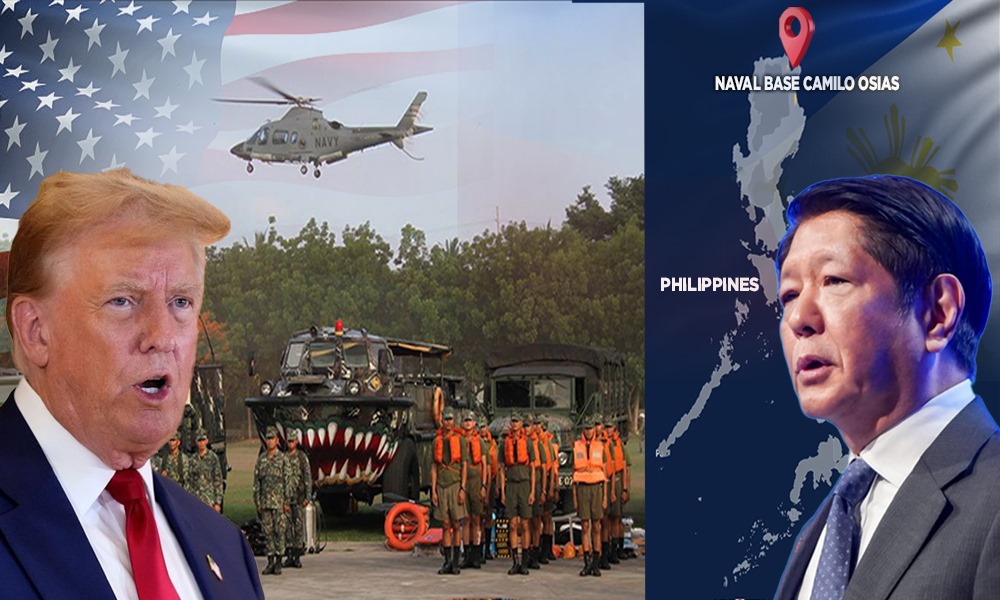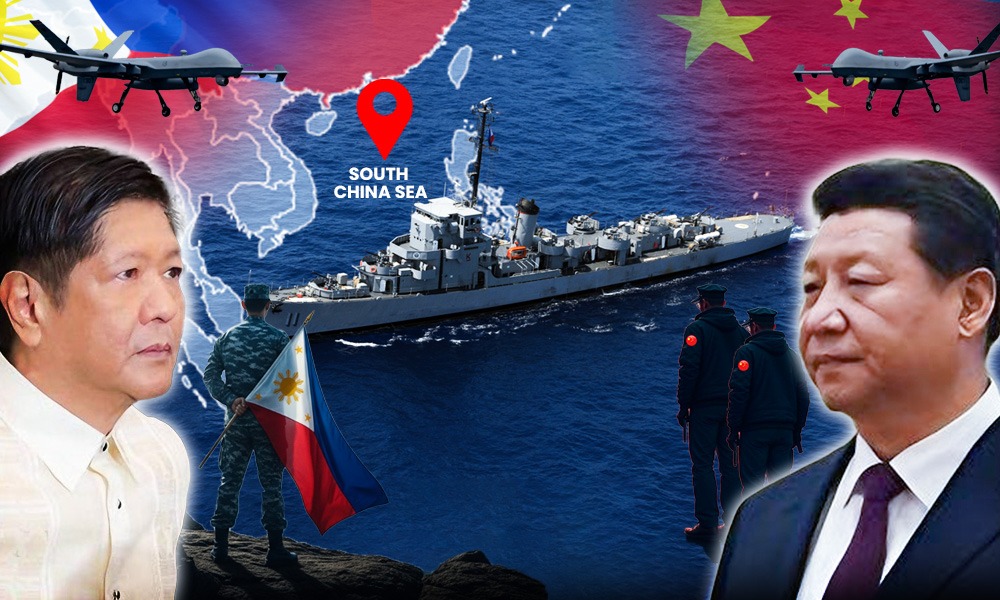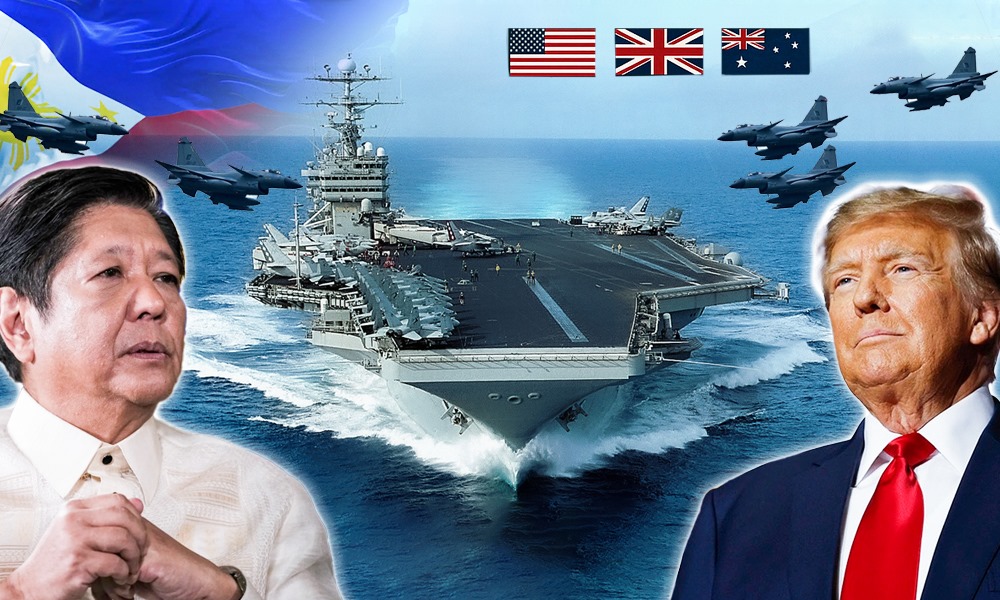In recent years, the Indo-Pacific has emerged as the most geopolitically charged region in the world, with the shifting power dynamics between the United States, China, and regional powers like the Philippines playing a central role in shaping global security. As tensions continue to rise over contested maritime territories in the South China Sea and the looming threat of conflict over Taiwan, nations in the region find themselves increasingly caught in the crosshairs of competing superpowers. Much like the strategic positioning of NATO bases during the Cold War, the Philippine archipelago has found itself at the nexus of this 21st-century great power rivalry.
Naval Base Camilo Osias, located in the northernmost tip of the Philippines, is at the heart of this evolving geopolitical landscape. This once underutilized facility in Cagayan province is set for a transformative upgrade under the Enhanced Defense Cooperation Agreement (EDCA) between the United States and the Philippines. With an expanded airstrip, new pier, and facilities to support U.S. military rotations, Camilo Osias is poised to become a linchpin in the region’s defense architecture. The strategic importance of this base mirrors the Cold War-era significance of U.S. military installations in Europe, designed not only to project power but to deter adversaries and ensure regional stability. For the Philippines, these upgrades offer an opportunity to fortify its defense capabilities while deepening its security ties with Washington. However, the road ahead is fraught with challenges, from local opposition to the heightened risk of escalation with Beijing, whose growing territorial ambitions in the South China Sea remain a flashpoint.
Introduction to Naval Base Camilo Osias
Naval Base Camilo Osias, situated in Santa Ana, Cagayan, on the northern tip of Luzon, has recently risen in strategic significance for the Philippines due to its proximity to vital maritime routes and the Taiwan Strait. Named after Filipino World War II hero General Camilo Osias, the base is destined for extensive upgrades under the Enhanced Defense Cooperation Agreement (EDCA) between the Philippines and the United States. These enhancements include a revamped airstrip, a new pier, and expanded facilities capable of accommodating rotating U.S. troops and pre-positioned equipment. Given its location just 400 kilometers from Taiwan and near the contested South China Sea, the base is pivotal for regional security and rapid response to humanitarian and climate-related emergencies.
Recent developments highlight the growing collaboration between the Philippines and the United States in the face of escalating geopolitical tensions. Increased joint military exercises at Naval Base Camilo Osias reflect a shared commitment to strengthening interoperability and readiness. These upgrades are part of a broader effort to modernize the Philippines’ defense infrastructure, which includes nine EDCA sites strategically located across the country. This initiative is seen as a deterrent to China’s assertive behavior in the South China Sea and a proactive measure against potential conflicts in the region. Experts, including Carlito Galvez Jr., the Philippines’ Officer in Charge of the Department of National Defense, have emphasized the base’s strategic role in protecting sea lanes of communication and enhancing regional stability.
The historical context adds further weight to these developments. The Philippines’ relationship with the United States dates back to the early 20th century, with the countries signing a mutual defense treaty in 1951. Although the U.S. military presence was reduced in the 1990s due to domestic opposition, recent shifts in policy under President Ferdinand Marcos Jr. reflect a recalibration toward closer U.S. ties. This pivot is largely driven by growing concerns over China’s territorial claims and harassment of Philippine vessels in disputed waters. Jonathan Malaya, Assistant Director General of the National Security Council, has highlighted the importance of U.S. forces in deterring China’s expansionist goals, particularly as Beijing seeks to project power beyond the first island chain.
Despite the strategic advantages, the growing U.S. military presence remains controversial among some stakeholders. Manuel Mamba, the Governor of Cagayan Province, has voiced concerns over potential risks, drawing parallels to historical conflicts like the attack on Pearl Harbor. In response, U.S. Ambassador MaryKay Carlson reiterated the U.S.’s respect for Philippine sovereignty and emphasized that China’s militarization within the Philippines’ exclusive economic zone is the real threat to regional stability. President Marcos’ firm stance on safeguarding every inch of Philippine territory reflects a balancing act as the nation navigates a complex geopolitical landscape while fortifying its defense capabilities through strategic partnerships.
The United States is Preparing the Philippines for a Possible WAR with China
Historical Context
Camilo Osias has a storied history rooted in World War II when it served as a crucial hub for the liberation of the Philippines from Japanese occupation. During this period, the base was utilized by both U.S. and Philippine forces for various strategic military operations, including troop training and logistical support. The region itself has a rich cultural background, with early settlers like the Negritos, woodcutters under Don Julián Astigarraga, and Ilocano migrants who gradually developed the area through organized societies known as gimongs. Palawig, the original name of the region, referenced the mouth of the river, reflecting the settlers’ reliance on river and sea routes to access the remote forests. The base’s strategic location on the northeastern tip of Luzon provided vital support for military campaigns and reflected the Philippines’ role as a pivotal theater in the Pacific conflict.
Over the decades, the importance of Naval Base Camilo Osias has evolved significantly. Following a reduction in the U.S. military presence in the Philippines in the early 1990s, the base’s strategic role decreased until the signing of the Enhanced Defense Cooperation Agreement (EDCA) in 2014. The agreement granted the U.S. access to select Philippine military installations, including the Osias base, for rotational deployments and equipment storage. The base’s relevance was further reinforced in 2023 when the EDCA was expanded to include four additional sites, reflecting a renewed emphasis on regional security in response to China’s increasing assertiveness. Its proximity to the Taiwan Strait and the South China Sea positions it as a linchpin for monitoring critical maritime routes and responding swiftly to potential conflicts or humanitarian crises.
Recent investments have modernized Naval Base Camilo Osias, transforming it into a hub equipped for contemporary security challenges. The United States has allocated over $100 million for infrastructure upgrades, including a revamped airstrip, a new pier, and expanded logistical and troop facilities. These enhancements not only increase the base’s operational capacity but also improve the interoperability of U.S. and Philippine forces. Experts, such as Ian Chong from the National University of Singapore, recognize the base’s strategic value in enabling rapid deployment and support for regional allies.
Geopolitical Significance
The Base holds profound geopolitical significance due to its strategic location near the South China Sea and Taiwan Strait, two hotspots of regional tension. Its inclusion among the nine bases accessible to U.S. forces under the Enhanced Defense Cooperation Agreement (EDCA) reflects the Philippines’ and the United States’ commitment to maintaining regional stability. In 2023, the revival of EDCA signified a shift toward deterrence, with the base serving as a critical node for monitoring Chinese military activities and protecting maritime routes. The base’s location in Sta. Ana, Cagayan, just 400 kilometers from Taiwan, allows for strategic positioning to respond swiftly to contingencies in both the Taiwan Strait and the South China Sea.
The resurgence of interest in Naval Base Camilo Osias is part of a broader recalibration of the U.S.-Philippines security alliance, aimed at countering China’s assertiveness in the Indo-Pacific. Since the closure of major U.S. bases like Clark Air Base and Subic Bay in the early 1990s, the Philippines has faced growing pressure from Chinese maritime claims, notably in the Spratly Islands and around the Second Thomas Shoal. The revival of EDCA, alongside the base’s upgrades, demonstrates Manila’s shift toward a deterrent posture, signaling to Beijing a renewed commitment to defending Philippine sovereignty and regional sea lanes. The base’s proximity to the Bashi Channel—an essential maritime corridor for accessing Taiwan—further enhances its strategic importance, enabling U.S. and Philippine forces to potentially disrupt Chinese movements or provide support to allies in the event of conflict. Analysts argue that a dispersed network of smaller bases, like Naval Base Camilo Osias, provides greater flexibility and resilience against potential threats compared to large, centralized bases.
Enhanced Defense Cooperation Agreement (EDCA)
The Enhanced Defense Cooperation Agreement, signed in April 2014 and enacted in June 2014, is a landmark defense pact between the United States and the Philippines. It enables U.S. forces to rotate through Philippine military bases for extended stays and build facilities for mutual use, without allowing permanent American bases. EDCA’s primary aim is to enhance the interoperability of the two nations’ armed forces, improve regional security, and enable rapid response to natural disasters and humanitarian crises. Infrastructure projects like Humanitarian Assistance and Disaster Relief warehouses are part of EDCA’s broader scope, ensuring that both countries can swiftly provide aid during emergencies. The agreement also strengthens the U.S.-Philippine alliance under the frameworks of the Mutual Defense Treaty and the Visiting Forces Agreement.
The base improvements include upgraded airstrips, piers, and storage facilities, facilitating joint training exercises and boosting defense readiness. These developments not only improve military capabilities but also create economic opportunities for local communities through infrastructure investments and job creation. The base’s dual role in defense and disaster relief ensures it can support military contingencies and humanitarian missions alike.
Experts recognize EDCA as a pivotal component of the evolving U.S.-Philippine security partnership. Figures like Evan S. Medeiros, a former U.S. National Security Council official, have lauded it as the most significant bilateral defense agreement in decades. Recent inspections by Philippine Defense Secretary Gilberto Teodoro Jr. highlight the importance of ensuring readiness and operational effectiveness at EDCA sites such as Lumbia Air Base. These visits emphasize the commitment to maintaining infrastructure that supports both military and humanitarian objectives.
Military Capabilities
The strategic location of Naval Base Camilo Osias makes it ideal for monitoring activities in the South China Sea and conducting maritime and aerial operations in response to regional security challenges. The base plays a pivotal role in joint military exercises, such as the annual Balikatan drills, where thousands of U.S. and Philippine forces train together to improve interoperability and readiness. These exercises allow for the pre-positioning of military assets and serve as a platform for conducting strategic maritime operations. Furthermore, the base’s upgraded facilities support rapid response capabilities, enhancing the ability of both countries to address potential conflicts, natural disasters, and humanitarian crises in the region.
In addition to Naval Base Camilo Osias, three other sites—Camp Melchor Dela Cruz in Isabela, Balabac Island in Palawan, and Lal-lo Airport in Cagayan—have been identified for development under EDCA. These sites are strategically located to address potential flashpoints near Taiwan and the South China Sea. Construction projects include runway expansions, fuel storage facilities, command centers, and warehouses for storing supplies and equipment. For instance, Balabac Island is undergoing construction of a 3,000-meter runway to serve both military and civilian aircraft, while plans for Lal-lo Airport involve repairs to the airstrip and building a pier.
Economic and Security Benefits
The economic benefits of recent developments in Santa Ana, Cagayan, are substantial, driven by infrastructure investments, strategic partnerships, and ecotourism initiatives. The Cagayan Special Economic Zone and Freeport has played a pivotal role in creating employment opportunities and attracting foreign and domestic investments. A major city development project within Special Economic Zone and Freeport is projected to bring in $4.5 billion, significantly boosting the local economy. Additionally, marine protected areas and ecotourism programs provide alternative livelihoods for residents while promoting environmental conservation and restoring vital ecosystems. These initiatives not only increase revenue but also contribute to sustainable development by balancing economic progress with environmental stewardship. The Enhanced Defense Cooperation Agreement (EDCA) between the Philippines and the United States further amplifies security benefits for the region.
Experts and local officials alike acknowledge the transformative impact of these developments. A U.S. diplomat in Manila noted a significant improvement in U.S.-Philippine relations, emphasizing that EDCA sites bolster regional preparedness and provide valuable opportunities for joint military training. Local government officials also highlight the dual benefits of economic growth and job creation brought about by new city developments and EDCA projects. Events like the Viray Festival attract thousands of tourists annually, further stimulating local businesses and the hospitality sector. Similarly, the Cagayan Special Economic Zone remains a hub for industrial, commercial, and recreational activities, drawing investments that support long-term regional prosperity. These combined economic and security initiatives position Santa Ana as a model for sustainable growth and strategic resilience in the Indo-Pacific region.
Future Prospects
Naval Base Camilo Osias is positioned for significant upgrades as part of the Enhanced Defense Cooperation Agreement (EDCA) between the United States and the Philippines. These improvements, which include a rehabilitated airstrip, a new pier, and expanded facilities for additional personnel, are designed to enhance the base’s operational capabilities. The upgraded infrastructure will support the increasing presence of U.S. military forces in the region.
In addition to Naval Base Camilo Osias, the EDCA expansion includes other key sites such as Camp Melchor Dela Cruz in Isabela, Balabac Island in Palawan, and Lal-lo Airport in Cagayan. The U.S. Department of Defense has allocated $66.5 million for infrastructure development across these sites over the next two years, focusing on the construction of training facilities, warehouses, and other critical infrastructure. These projects are expected to have a transformative impact on the region, providing a platform for joint military exercises, disaster response operations, and the strengthening of regional security cooperation.
While the upgrades present several opportunities for enhanced security and economic benefits, they also come with potential challenges. Geopolitical tensions, particularly with China, could escalate as a result of the increased U.S. military presence, as Beijing views such expansions as a direct challenge to its influence in the South China Sea. development. In the long term, these changes are likely to play a crucial role in the Philippines’ security strategy, enhancing its ability to counter regional threats and natural disasters, while also influencing the broader geopolitical dynamics in the Indo-Pacific.
What are the Most Pressing Challenges for the Philippines in 2024?



